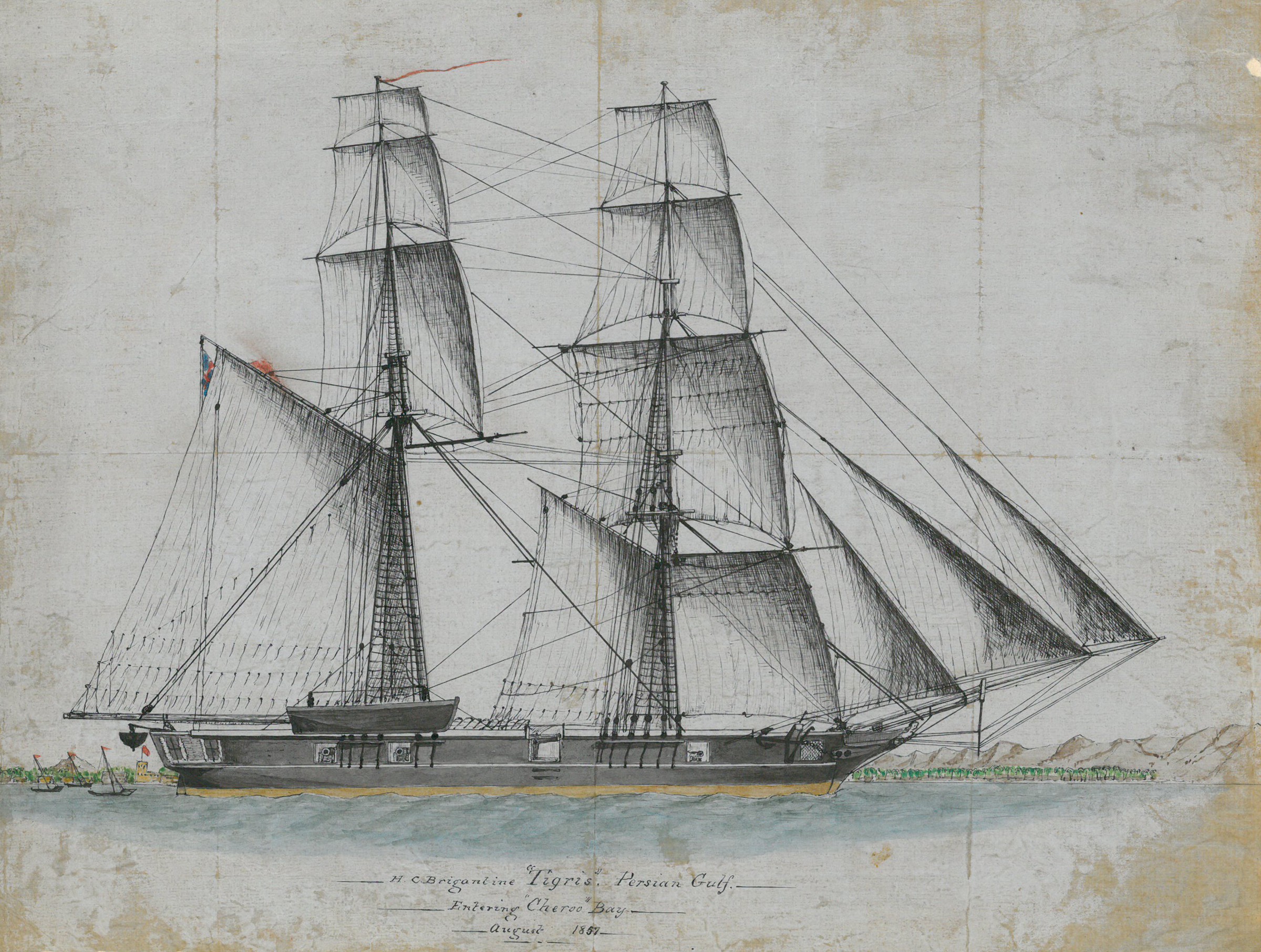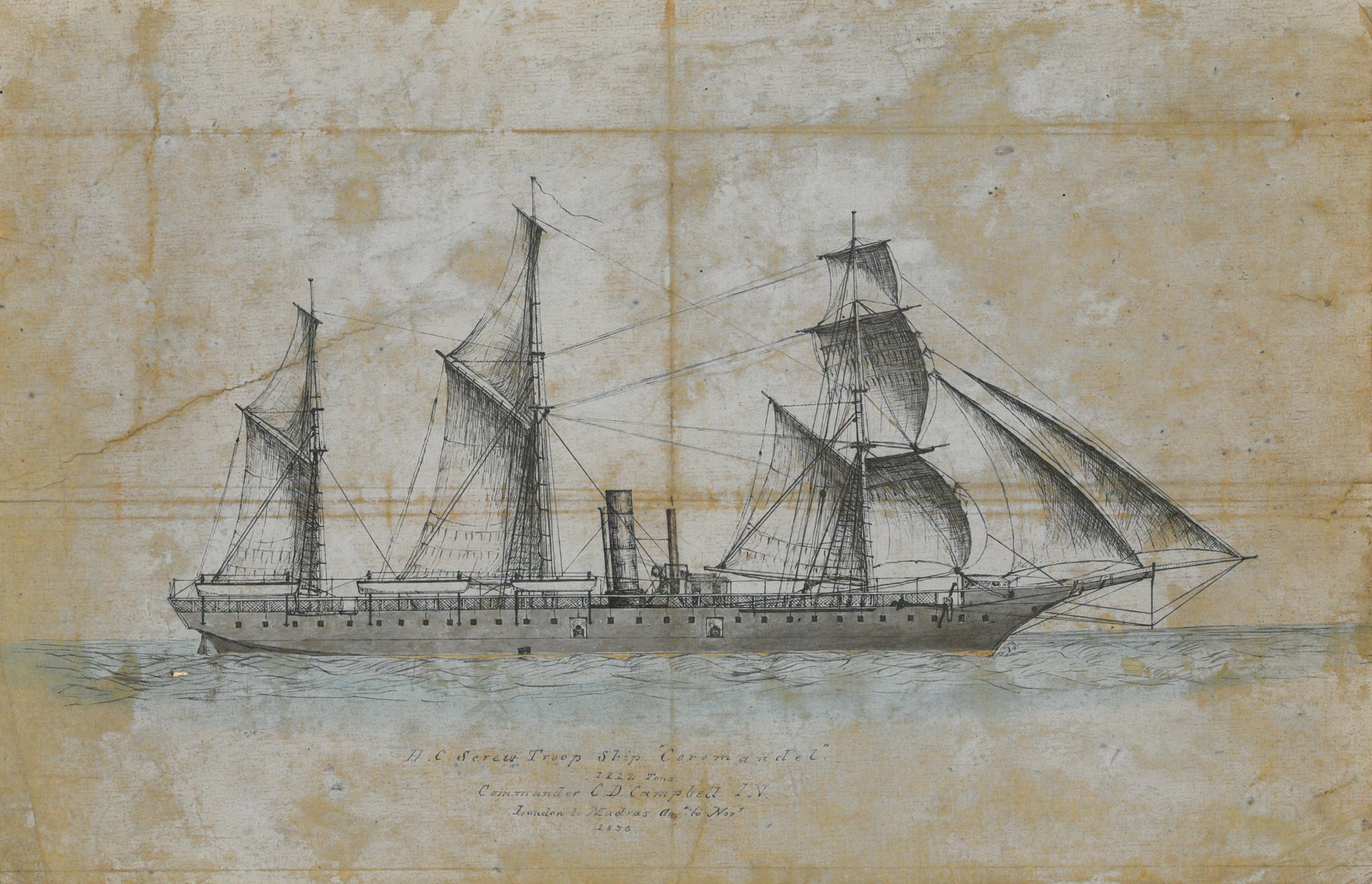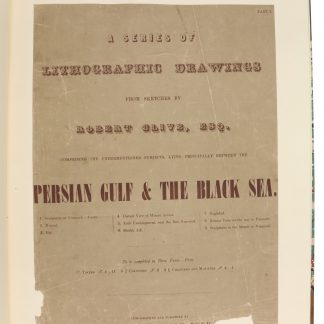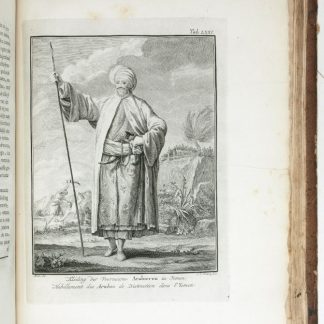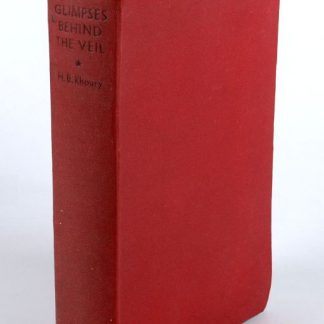A British surveyor in the Arabian Gulf
Collection of watercolours showing Indian Navy ships in the Arabian Gulf. Includes Collingwood's original surveying telescope.
Three hand-drawn watercolours showing the "Coromandel" (148 x 225 mm), the "Tigris" (178 x 240 mm), and the "Georgiana" (142 x 240 mm), mounted on backing paper, separately matted. With a presentation leather-cased 1½-inch three-draw leather-covered surveying telescope and compass compendium by Andrew Ross, London, contained in 29 cm leather carry case with lid enclosing a lacquered-brass compass, collapsed length 25 cm, expands to 71 cm.
€ 25.000,00
A striking collection of original watercolours drawn by Lieutenant William Collingwood, civil engineer in the Royal Indian Navy, during his surveying mission to the Middle East in the mid-1850s. The three ships, all built for the "Honourable [East India] Company", are the H.C. Screw Troop Ship "Coromandel" ("1112 Tons. Commander C. D. Campbell I.N. London to Madras Aug. to Nov. 1856"), the H.C. Brigantine "Tigris" ("Persian Gulf. Entering "Cheroo" Bay. August 1857"), and the H.C. Schooner "Georgiana" ("Lieut. Collingwood Comd. off 'Karack', Feb. 1858"). While the exact location of the "Coromandel" at the time of sketching is not identified (though Collingwood was undoubtedly in the Arabian area at the time), the other two ships are clearly sailing the Arabian Gulf. The "Tigris" is shown entering Cheroo Bay (Chiruyeh, Bandar-e Chiru), on the south coast of Persia, opposite Inderabi Island; the bay was popular with navigators in the region for offering safe shelter from western and northwestern winds, with regular soundings of up to ten fathoms quite near the shore. The "Georgiana" is pictured farther north off Kharg Island, 16 miles from the coast of Bushehr province. Kharg is mentioned in the 10th-century "Hudud al-'alam" as a good source for pearls and was visited by Jean de Thévenot in 1665, who recorded trade with Isfahan and Basra. After the Dutch Empire established both a trading post and a fort on the island in 1753, the Dutch fort was captured in 1766 by Mir Mahanna, the governor of Bandar Rig. The island was briefly occupied in 1838 by the British to block the 1838 Siege of Herat but was soon returned.
Slight loss to upper left corner of all three sheets; some brownstaining and traces of folds, but well-preserved on the whole. The ensemble is neatly complemented by Collingwood's presentation surveying telescope and compass compendium, the telescope being signed and inscribed: "From Comr. Selby, Surveyor in Mesopotamia, to Lieut. W. Collingwood, Asst. Surveyor, in kind remembrance of Services together in Babylonia & Irak Arabia". Commander W. B. Selby, who dedicated this fine telescope-cum-compass set, began his distinguished surveying career in 1837 when, as a midshipman, he embarked on the expedition first to lay navigation buoys in the mouths of the Indus River and then to chart some coastal areas in the "Horn of Africa". By 1846 he was back working off the mouths of the Indus, having made his reputation in Mesopotamia (in 1840-41), and thereafter achieved considerable acclaim for his numerous other surveys, including those during the military expedition to Persia in 1856, before returning to England at the end of 1862. He was succeeded as Surveyor of Mesopotamia by his protégé, Lt. William Collingwood (a distant cousin of the Admiral), who had already done much valuable work in the region, including the large-scale, though surreptitious, mapping of Baghdad in 1855, described by him as follows: "The survey of the city of Baghdad was completed entirely by myself and under very unpleasant restrictions [...] The Turkish Government were not to know anything about it [...] and I was left to survey the town as best I could, and under such difficulties that at times I had to note bearings and paces all over my white shirt, where best I could get the pencil at the time [...]". During this same expedition, Collingwood also surveyed the Shatt-ul-Arab, the city of Bussorah (also by stealth) and much of the country between the Tigris and Euphrates Rivers, and was undoubtedly one of the most gifted and productive R.I.N. surveyors of his day.

